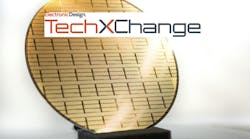ID 132350565 © Leowolfert | Dreamstime.com
Bidirectional GaN ICs, Gate Drivers Foster High-Power Single-Stage Conversion Topologies
June 6, 2025
Related To:
Navitas Semiconductor’s 650-V bidirectional GaNFast ICs and IsoFast, high-speed isolated gate drivers were created to help simplify the transition from two-stage to single-stage power topologies in EV chargers, solar inverters, energy storage, and motor drives. The GaN power ICs are monolithic, single-chip designs featuring a merged drain structure, two gate controls, and an integrated substrate clamp that function as two “back-to-back” GaN power switches.
One bidirectional GaNFast IC can replace up to four older switches used to implement the two-stage architectures found in over 70% of today’s power-conversion circuits. Not only does the chip increase system performance, but it also reduces component count, PCB area, and system costs.
>>Check out this TechXchange for similar articles and videos
Comments
Comments



